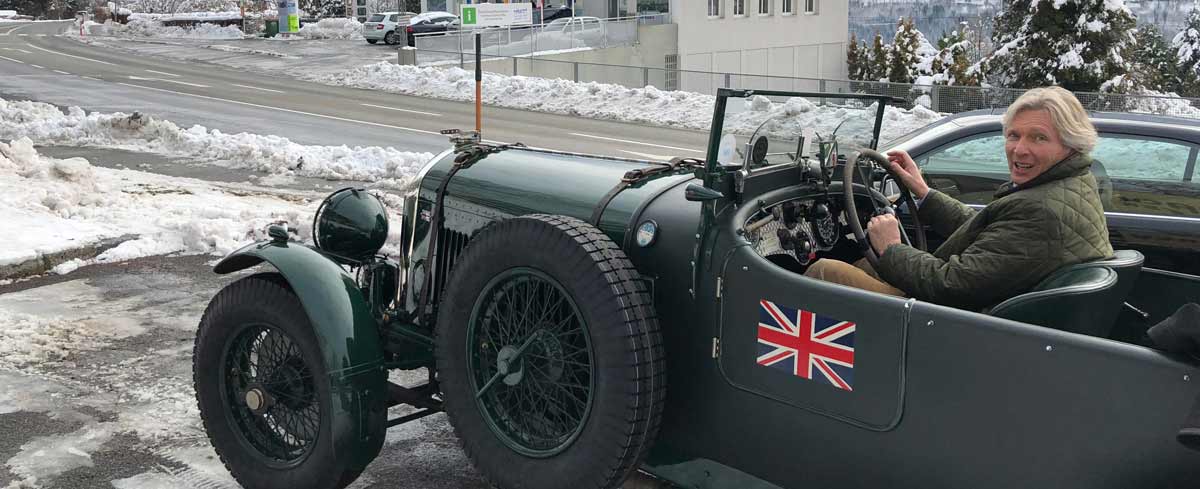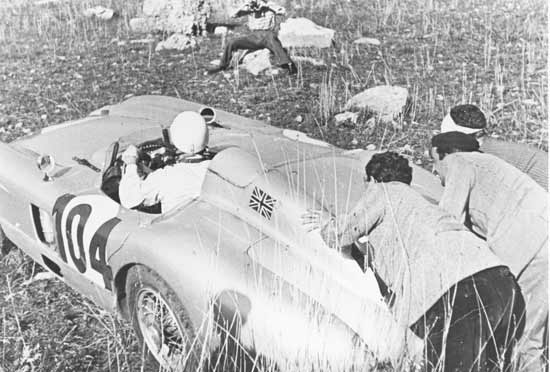
Sir Stirling Moss obituary

It is with enormous sadness that we learn of the passing of 'Mr. Motor Racing', Sir Stirling Moss.
For most British schoolboys of the '50s and enthusiasts worldwide, the exciting vibrant name Stirling Moss meant a dashing gentleman who was a genius behind the wheel of a racing car. Early in his career, in the war-torn world, he was the British hero, the British crusader conquering challenges against the odds in foreign lands. He was the James Bond of motor racing.
Moss's stature and achievements are almost impossible to comprehend in the modern age. Starting out in little 500cc racing cars just after the war, and at the age of 18, he was a prodigy. He quickly progressed to faster machinery but remained steadfastly patriotic in a period when Britain's racing cars were yet to dominate and were almost a joke. One exception was the Jaguar XK 120. For the classic Tourist Trophy race on the lethal Dundrod circuit in Northern Ireland, no-one would provide him with a car, concerned he was driving too fast, would kill himself and fearful of the resultant negative publicity. He managed to borrow an XK 120 and, in appalling conditions, drove away from the field to win the first of seven TT victories.
Moss showed his extraordinary versatility when he took part in a few major rallies. At his first attempt at a major one, the Monte Carlo Rally no less, he missed victory by a mere four seconds. In the Alpine Rally, Stirling won the Gold Cup after three years of finishing penalty-free.
In 1955 he had his big break when the mighty Mercedes-Benz Silver Arrows team, headed by the redoubtable Alfred Neubauer, signed Moss to partner World Champion, Juan Manuel Fangio. They became known as 'the train' as Moss dutifully followed in his team leader's wheel tracks just a few inches behind for race after race, with one exception. That exception was the British Grand Prix when Moss beat Il Maestro.
We will never know whether Moss won fair and square that day or whether the Argentine ace gallantly allowed his young team mate to win his home race. What is not in doubt is that Stirling was faster than Fangio in sports cars and in '55 he drove brilliantly to win three of the four great classics – the Mille Miglia, the TT and the Targa Florio, to clinch for Mercedes the World Sportscar Championship crown. He and Fangio were leading Le Mans when, after eight hours, the orders came from Stuttgart to withdraw after another Mercedes had been involved in the worst accident in the history of motor sport.
As to Moss's Mille Miglia win, it is the stuff of legend. Won only once before by a non-Italian, this 1,000-mile race on the roads of Italy, including long mountain passes liberally punctuated with hairpins, saw Stirling and his fearless navigator Denis Jenkinson using route notes they had prepared during recce runs. Unbelievably, they averaged a shade under 100mph over 10 hours to take an extraordinary victory. This must go down as one of the greatest sporting achievements of all time of any sport.
It was the Four-Minute Mile of motor racing.
Away from the circuit, Moss was one of the first of the jet set brigade, living a glamorous life with a never-ending succession of beautiful ladies in toe. As he often mentioned, he was the first sportsman to appear on the front pages of the newspapers as well as the sports pages at the rear. He was the Beckham of his era.
Though he worked hard and played hard, he was the total professional and the epitome of sportmanship. When Mercedes pulled out at the end of '55, Moss led the Maserati team, winning in Monaco. He then led the British Vanwall team and helped the industrialist who created the team in his quest to 'beat the bloody red cars' of Italy, achieve his goal. Moss would never drive for Ferrari because Enzo Ferrari had behaved very badly towards him early in Stirling's career.
By the late '50s and early '60s, with Fangio now retired, Moss was in a league of his own. In 1958 he scored Cooper's first Grand Prix victory and the first in the modern era for rear-engined F1 car. In 1959 he helped Aston Martin win the World Sportscar Championship. In 1960 he took a maiden victory for Lotus. During this era, to give himself, the supreme competitor, a further challenge he chose to drive for the privately-run Rob Walker team against the factory outfits. In '61 he won in his under-powered, privately-run Lotus against the might of Ferrari at Monaco and the Nürburgring, purely on sheer skill on drivers' circuits. In 1960 he had a massive accident at Spa when his Lotus broke and he suffered multiple serious injuries. Yet he missed only three races and won his comeback GP, demonstrating his courage, determination and the fact he was probably the fittest man in the country.
In April 1962 it all came to an end when he had a still-unexplained accident at Goodwood, had to be cut free and was in a coma for many weeks. When he had finally recovered, he tested himself on the track and decided the magic ability had gone. Sadly, it was probably a premature decision but Stirling, the consummate competitor, did not want to risk being just one of the best.
In his private life he married Canadian brewing heiress Katie Molson in 1957 but, very sadly, the lifestyle and fact that friends were being killed almost weekly wrecked the marriage though they would be great friends in later life. Following his career-ending accident, he married his nurse Elaine Barberino in 1964 but the marriage was a short one. They had a daughter, Allison. In 1980 he would marry Susie, whom he had first met in Hong Kong when she was a child. They had a long and very happy marriage, with Susie being ever supportive, and they had a son Elliott.
Though he never won the World Championship, he was runner-up four times, defeated by bad luck rather than better drivers, with the exception of Fangio who had the benefit of the best cars. He won 14 Grands Prix and over 200 of the 500+ races he entered. Awarded the OBE, he was knighted in 2000.
In describing his character the modern usage of the word 'driven' could have been invented for him, with the double entendre irrelevant. His favourite saying was, 'Motion is tranquility'. Constantly full of energy, he did not suffer fools gladly. In later life he mellowed considerably and was the most delightful company with a great sense of humour and fun. His jokes were awful but his friendship was genuine and loyalty supreme. Arguably the first professional sportsman, he was an utter professional in everything he ever did. For many, whether they knew him intimately, met him briefly or only ever read about his exploits, he will always be one of the finest competitors in any sport and one of the greatest Britons to have lived.






2 comments
Dear Philip
A lovely article- thank you.
Martin
Martin Reynolds
We had the privilege of meeting Stirling and Susie on a few occasions and he was fantastic company, willingly giving his time to talk about anything motor racing. As a driver he was without equal in his era and as a racer I doubt that there will ever be anyone better. He truly was “Mr Motor Racing”. RIP Sir Stirling your achievements will live forever. Dave & Sue Boote
David Boote
Leave a comment
This site is protected by hCaptcha and the hCaptcha Privacy Policy and Terms of Service apply.